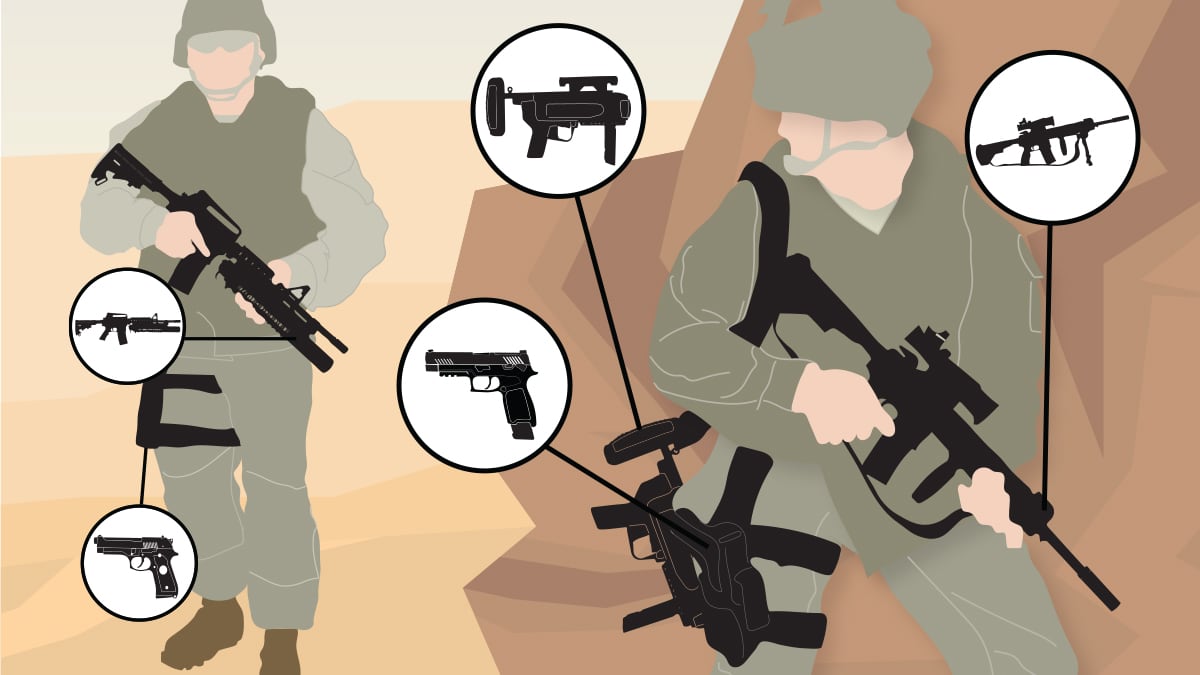A Marine who crossed the yellow footprints four years ago and later arrived at an infantry unit’s armory for weapons issue carried a substantially different load out than the same Marine reporting for duty today.
Today’s Marine has weapons that can shoot farther, faster, more accurately and sling many more types of projectiles downrange.
In fact, over the past few years, Marine Corps weapons from pistols to shoulder-fired rockets have seen more advances, upgrades and changes than the service likely saw in the previous three decades.
RELATED
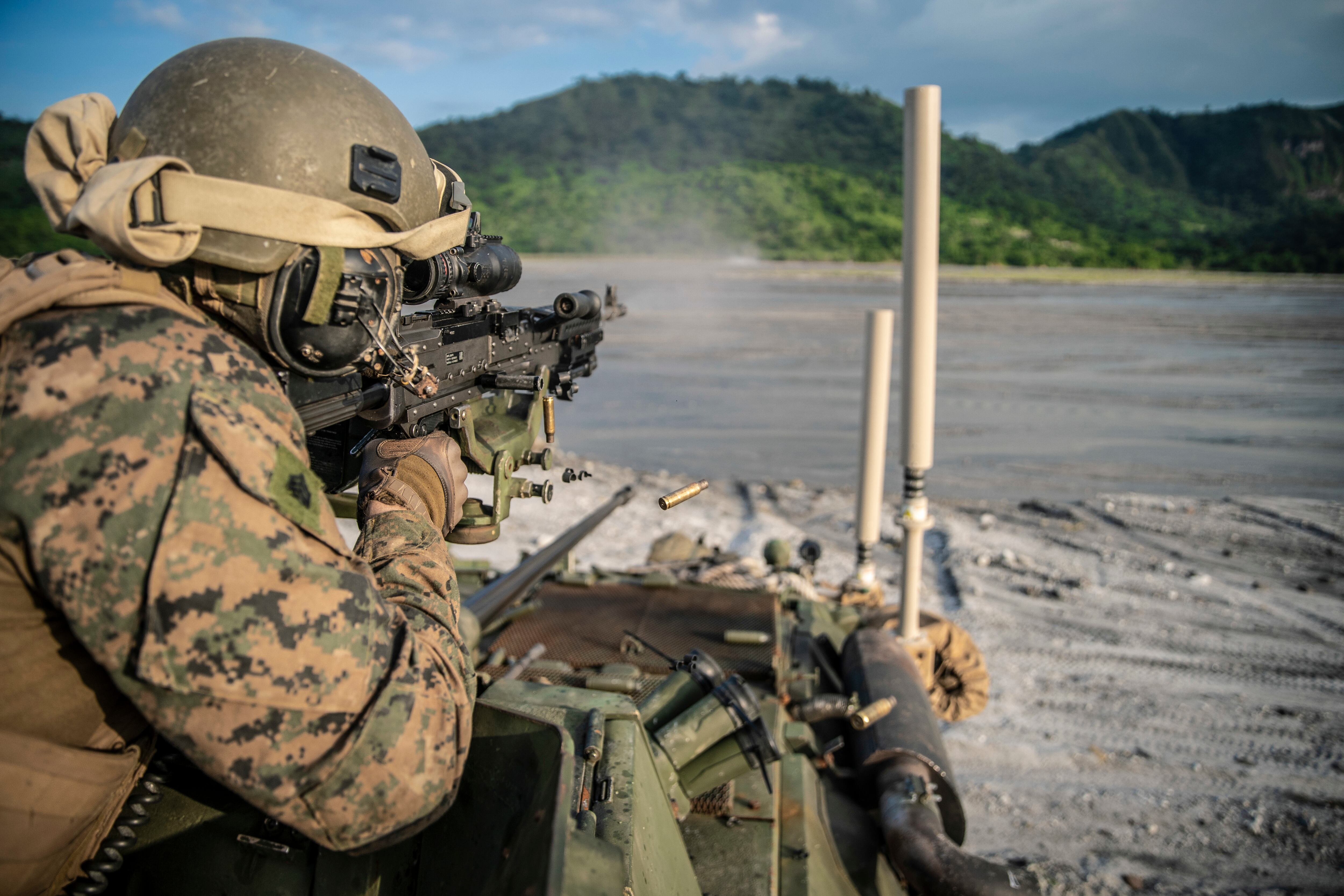
Those changes, Marine Corps Times has found, have come from a combination of scientific studies, a recognition by top leadership that close combat has to change and battle-hardened veterans telling small arms developers the weapons flaws they were finding when in the fight.
And many of the findings of those involved started with adjusting to ever-improving adversaries in current wars with an eye on what the next potential peer combat could bring.
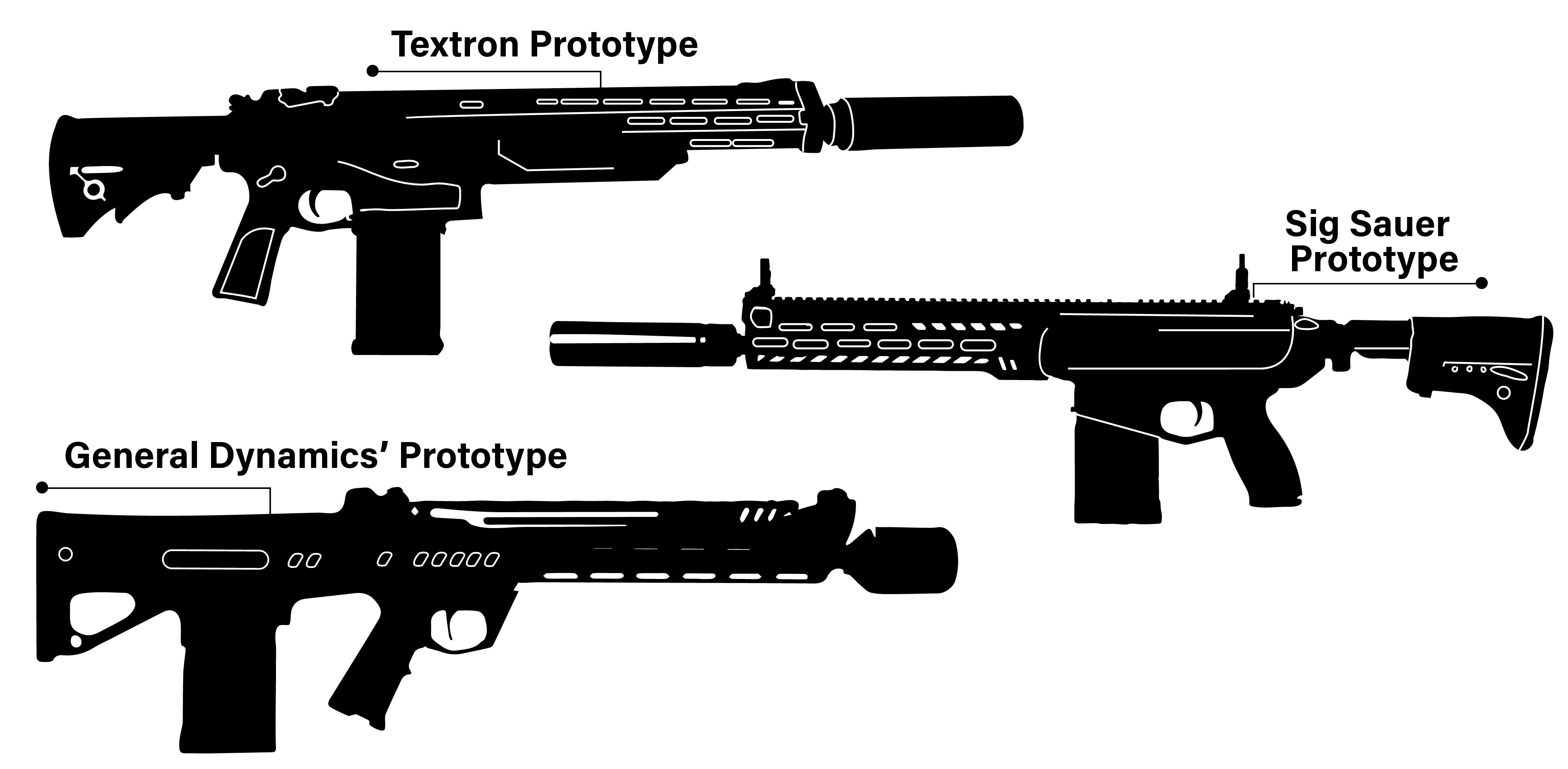
The infantry Marine of today will carry a rifle that can perform the work both of a rifle and automatic rifle in the same package, a pistol that’s built for better optics, a new grenade launcher that can fire a wider range of munitions. That same infantryman will have a more modern sniper rifle supporting his formation and likely hear a different battle as everyone around will likely have suppressed weapons.
Much of those changes, and the work that went into them, emerged from a series of experiments during Sea Dragon 2025 that focused on infantry squad lethality, said Billy Epperson, infantry weapons capabilities integration officer and Chris Woodburn, deputy branch head, maneuver branch, ground combat element both with Marine Corps Combat Development Command.
“Across the board for all weapons modernization, pick a weapons system, the intent for everything we’re doing is to increase the lethality of the Marine rifle squad,” Epperson said.
And the results of those changes will likely mean changes to Marine Tactics, Techniques and Procedures for the infantry squad, platoon and company as deployments and experimentation continue to push the capabilities of those formations with the new equipment they’re now fielding.
The rifle
The most notable change, and nearest to the heart of every rifleman, has been the rifle.
The M16 is still the standard rifle being toted by nearly every Marine and soldier that his father and grandfather might have carried in the jungles of Vietnam, the streets of Beirut, Mogadishu or on the 2003 march to Baghdad.
From its inception, it courted controversy.
Called the “plastic rifle” and the subject of letters to Congress for jamming in firefights and continued debate over the effectiveness of its lighter, high velocity round, the first versions of the M16 cast a long shadow over government decisions in small arms and downstream effects on Marines and soldiers in combat.
But, over time, the rifle saw a host of modifications that improved its durability, range, rate of fire and the round it fired. The M4 carbine emerged and was used decades ago for special operations. While suitable for certain situations, it still lacked the range and lethality that Marines needed in Iraq and Afghanistan.
Some have always decried the basic design, calling the direct gas impingement operation that the M16 used its fatal flaw the limited its rate of fire and necessitated extensive maintenance and cleaning to avoid feeding issues and jamming.
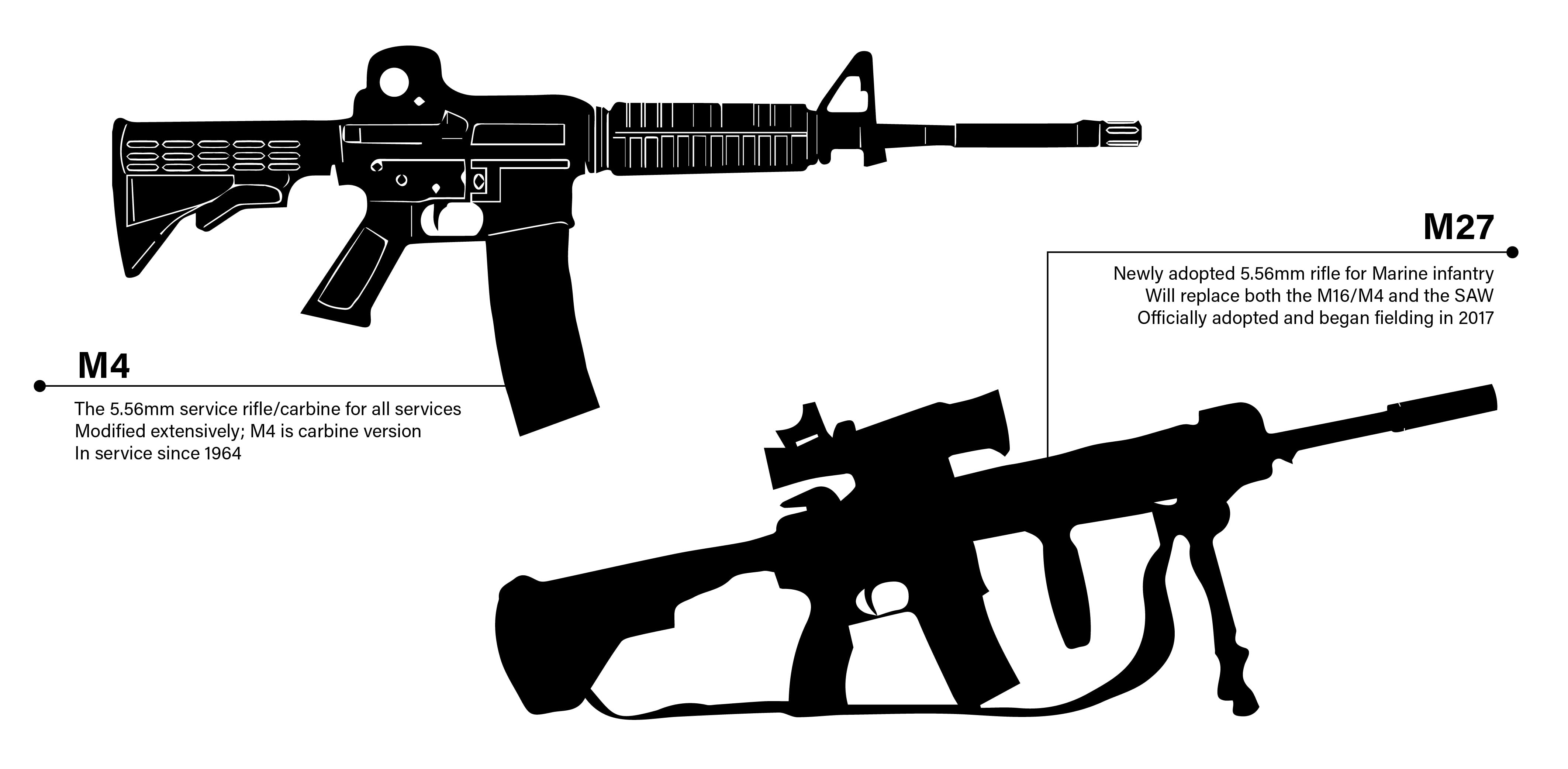
Enter the M27 Infantry Automatic Rifle. The weapon uses a gas piston operating system. It shoots the same round but faster and with less maintenance.
But, that’s a little tricky. Mostly because, while former Commandant Gen. Robert Neller ordered that the M27 IAR begin fielding to replace the M16 in all infantry units in 2017, the weapon actually emerged from work nearly two decades before to replace the M249 Squad Automatic Weapon.
Back in 2000, the Marines were looking for a lighter, more accurate replacement for the SAW. A request to industry in 2005 led to the Corps selecting the Heckler & Koch 416 as the M27 in 2010. Marines took that rifle with them to Afghanistan in 2011.
It proved lighter than the SAW and had a 36 rounds per minute rate of fire, or three times that of the M16.
The SAW has had its own checkered history with troops. Notorious in training circles for its jamming, the light machine gun saw those suspicions confirmed by a 2006 CNA Corporation report, “Soldier Perspectives on Small Arms in Combat.”
Nearly one third of troops who carried the SAW had it jam while in contact with the enemy, according to the report. One in three soldiers lacked confidence in the weapon.
Of the 2,600 soldiers surveyed for the report, the SAW came in second only to the M9 pistol for the lack of confidence in its reliability and durability.
The SAW is also considerably less accurate than the M27. The older machine gun fires a 12 Minute of Angle as compared to the 2 MOA of the M27. That means that at 100 yards the SAW’s rounds can strike within about a foot of the target while the M27 is no more than 2 inches from where it is aimed. Initial findings also showed the M27 didn’t jam and wasn’t as dirty as the M16 or SAW systems. Those performances led to the adoption to replace the SAW in the squad, then to replace both the M16 and M4 in the squad and later, a more accurized with better optic version, the M38, to become the Squad Designated Marksman Rifle.
An M4 barrel and bolt can last up to about 10,000 rounds before needed replacement. But the M27 has routinely lasted more than 35,000 rounds before requiring the same.
Marines with 3rd Battalion, 5th Marines, were equipped with M27s and suppressors for large-scale tests in 2017. The results of better signature control, accuracy and reliance cemented Neller’s decision.
The M27 essentially became a one-stop replacement for rifle, carbine, light machine gun and marksman rifle.
The optic
To help that M38 and the M27s in the squad shoot at distance more accurately, the Marines have the squad rangefinder to increase the first shot probability of hit. The Squad Common Optic, to better leverage the M27’s accuracy, had a request put out earlier in 2019 that seeks a scope to engage targets at the 600 to 900m range, which is slightly more powerful than the four times magnification and 800m range of the current Rifle Combat Optic.
They have set late 2020 to begin procuring so that fielding may commence in early 2021.
Before then, Marines will also get their hands on a new squad binocular night vision goggle by 2020 that will dramatically improve night vision, depth perception and targeting.
But, if an Army program to develop an entirely new rifle and automatic rifle around a round never before part of the inventory is successful, the M27 could also be replaced.
The round
The Next Generation Squad Weapon program is currently seeing three companies — General Dynamics, Sig Sauer and Textron Systems — compete to build the rifle and automatic rifle both chambered in 6.8mm.
To meet lighter but more lethal demands, General Dynamics has put forth a bullpup design, putting the magazine behind the trigger to maintain barrel length without lengthening the weapon. Textron has built the weapon around the round in a “cased telescope” ammo package that eliminates the heavy brass and gives designers ways to put different types of round size, weight and propellant to squeeze performance out of the form.
And Sig Sauer has a more traditional rifle design, similar to a beefed up version of the current AR platform that most Marines are familiar with but with more robust and durable components.
Though all hold promise, the next two years will determine which is has the best shot at becoming the future rifle of the Army and Marine infantry.
The intermediate caliber round selection was to maximize lethality, accuracy and velocity in a weapon that was light enough to carry on long missions but accurate enough at farther ranges and against tougher targets, including body armor.
The pistol
At the same time as the Marines were adopting the M27, developments by the Army were quickly finding a way to solve a decades-old problem — replacing the M9 Beretta pistol.
Army leadership tossed out years-long requirements that had stymied replacing the pistol, first issued in 1985, and ran through a competition, testing and fielding in less than two years to adopt the Sig Sauer 9mm M17 handgun, part of the Modular Handgun System, which includes day/night optic and suppressor options.
Marines took on the compact version, the M18, to replace the M9s shortly after the Army began fielding its MHS.
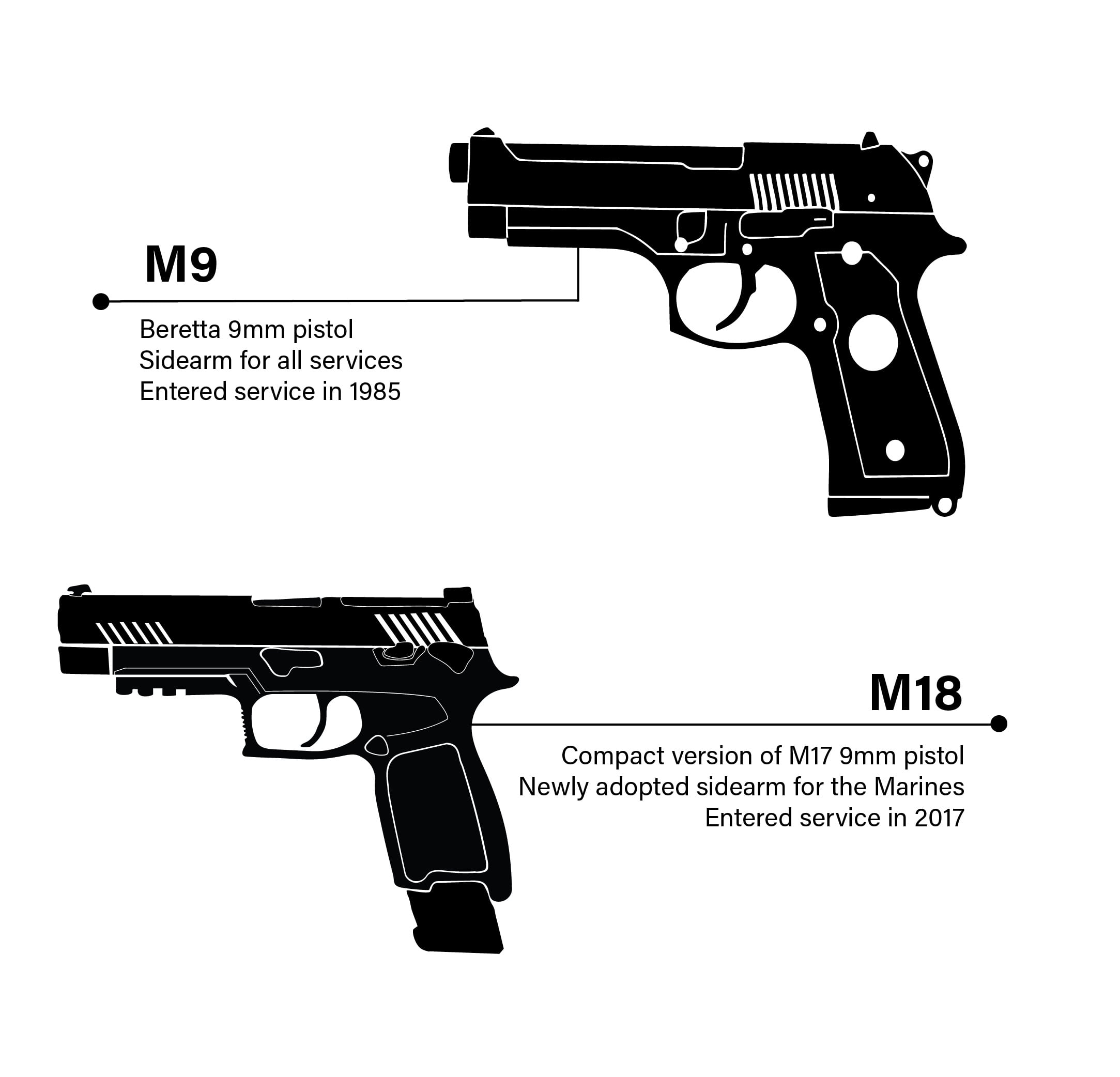
The grenade launcher
While each of the updates so far has replaced one for one or found more jobs for individual weapons, such as the M27, another weapon change did add some kit to the Marine gear but also more than tripled their firepower options.
That’s because the long-serving M203, 40mm grenade launcher, which came on the scene in 1969 to replace the M79, a shoulder-fired, single shot grenade launcher, had just a handful of munitions that it can employ.
Developments that could include many more different 40mm variants need a different type of launcher. That’s one reason why the Army and the Marines have taken on the M320, which can accommodate longer rounds with its side-loading mechanism, as compared to the breech-loading M203.
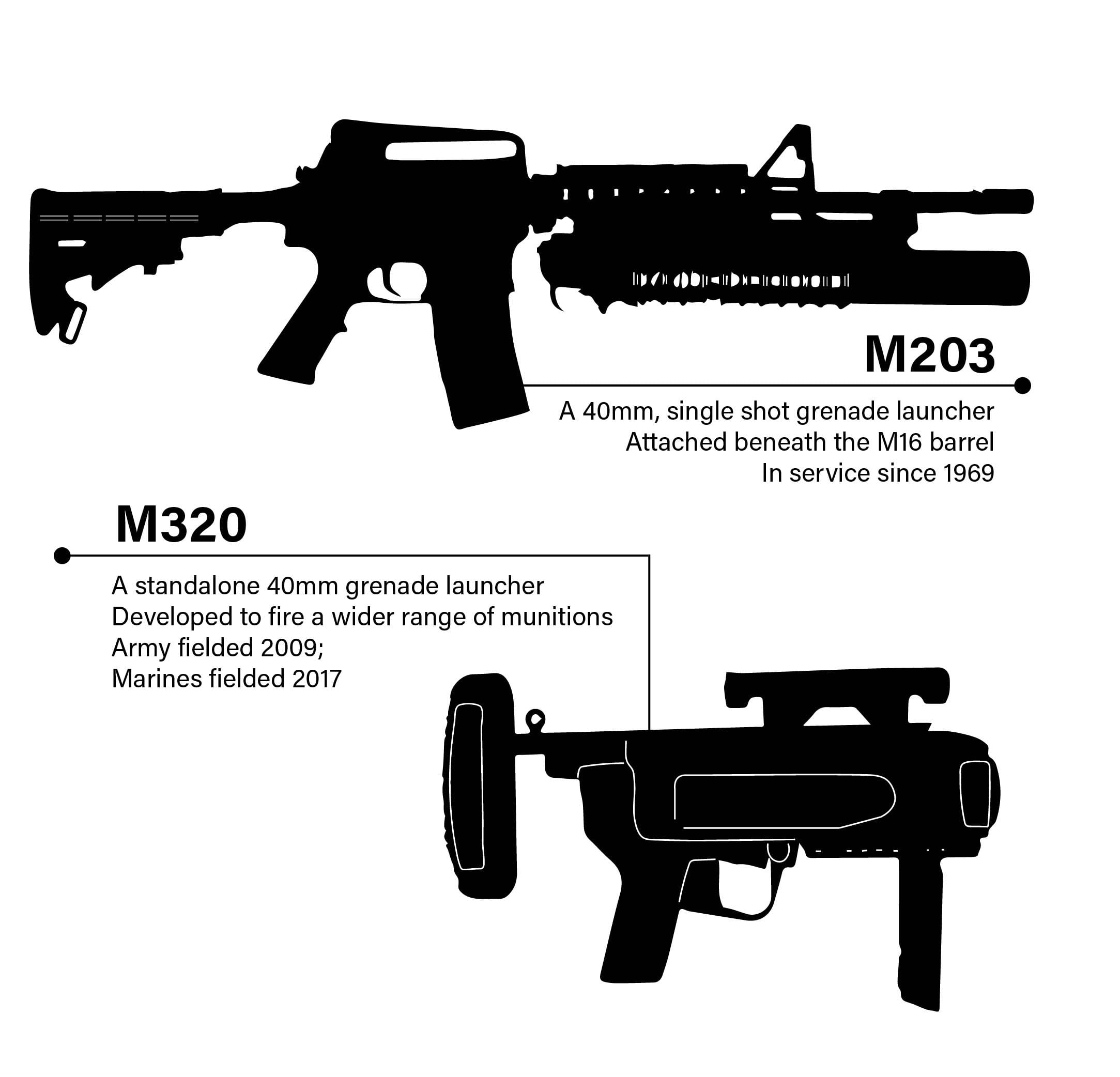
The Gustaf
And each squad is going to see a new addition to its weaponry ranks. That’s because the Marine Corps is pushing down the shoulder-fired rocket, anti-barricade, anti-armor capability to the squad with the Carl Gustaf Recoilless Rifle.
The weapon fires an 84mm round that can be used for bunker busting or to take on certain light-armored vehicles and some tanks.
That capability has traditionally been held at the company level with the Mk 153 Shoulder-Launched Multipurpose Assault Weapon, or SMAW, and that previous setup included was six SMAWs for the company to employ as needed, Woodburn said.
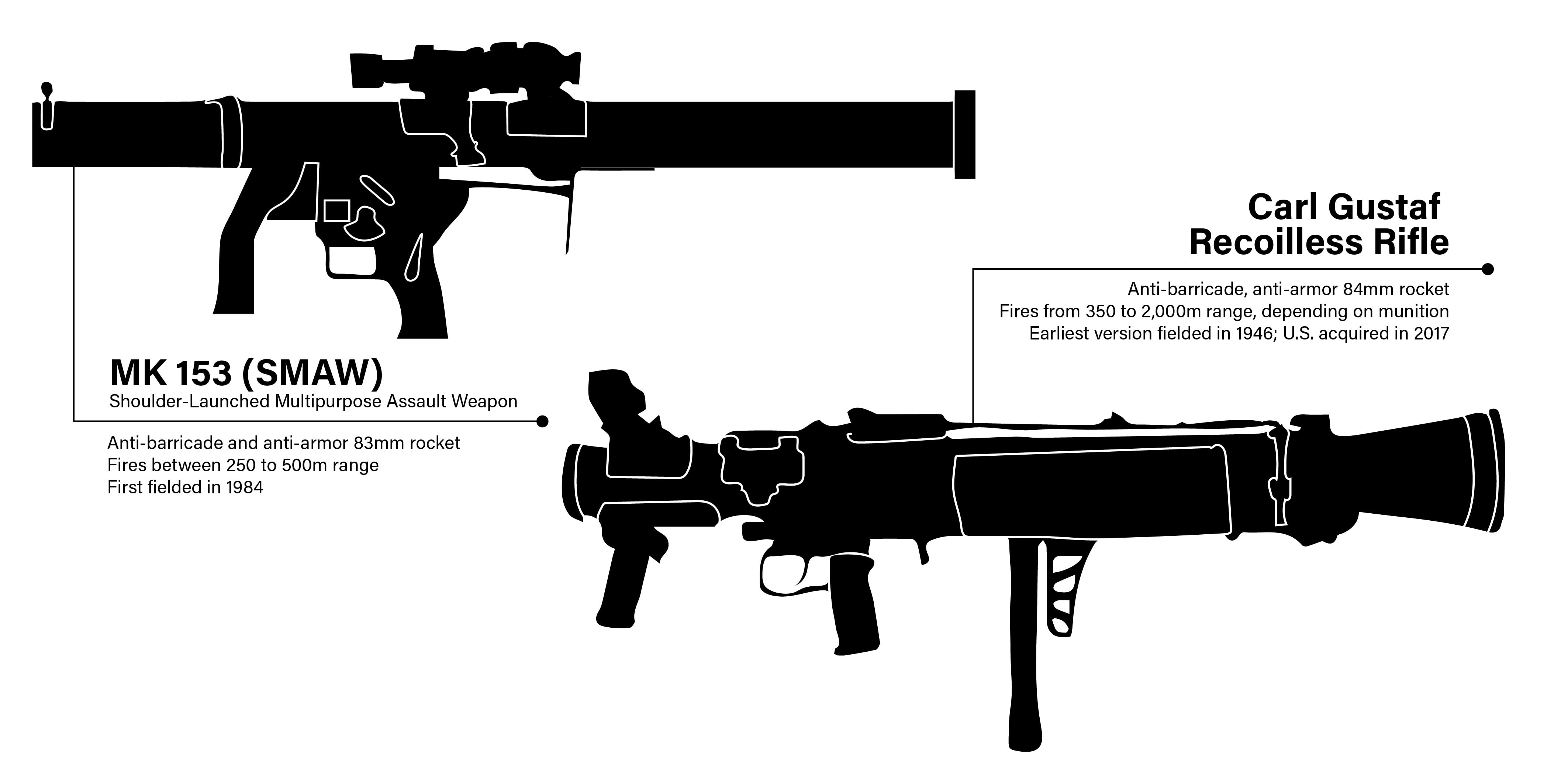
The current SMAW gives Marines three round options and even with the recently fielded mod 2 version, it can only effectively fire to the 500m range.
“We took a hard look at increasing the lethality of the squad and giving them a better capability,” Woodburn said.
The result was the Gustaf.
It has a family of 11 rounds, nine of which are kinetic, Woodburn said. Those options also provide nearly double the distance range as the SMAW. And one Gustaf will go to each squad, to be used much like a multi-shot grenade launcher, but with more oompf.
That fielding begins in two years.
The 2020 infantryman
And though its not technically in the squad-level arsenal, the immediate long-range rifle support to the squad got a recent boost as well.
When the Mk13 Mod 7 sniper rifle was chosen to replace the venerable M40 sniper rifle, in service since the Vietnam War, those Marine shooters got not just a new rifle with modern accessories and options, they also got a more powerful, farther shooting round.
The M40 fires the same caliber as the M240 machine gun, 7.62mm, which has an effective range to 800m. Though many shoot at or beyond the 1,000m range, depending on conditions and target.
The Mk13 Mod 7, firing the .300 Winchester Magnum, gives Marine snipers at least 1,000m range with lethal power at the end of that distance.
Though an improvement, the Mk13 Mod 7 is still an interim replacement.
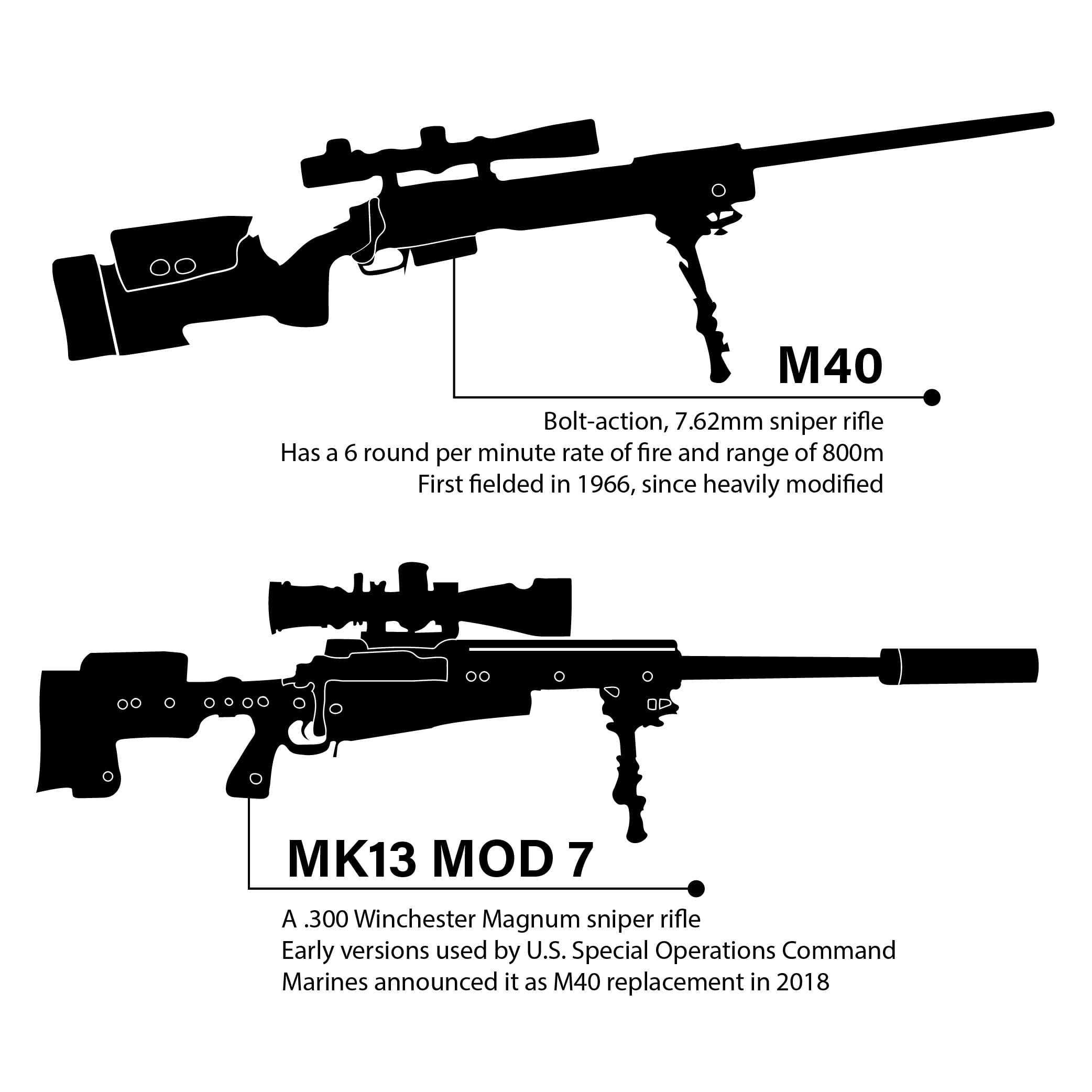
Marines are closely following the Special Operations Command development of the Advanced Sniper Rifle, which will likely replace the Mk13 Mod 7 when it fields in early 2021 to 2022, as officials acknowledged.
And that near-term sniper rifle replacement isn’t all that’s in store for Marine shooters.
Marine Corps Combat Development Command’s weapons experts have said at industry forums that they are assessing the work being done by SOCOM to use the .338 Norma Magnum round to replace the M240 machine gun, which fires the 7.62mm.
Marines are seeing if that would fit to replace the M240 in the rifle companies for dismounted ops.
That round can also be used in place of the .50 caliber round for some missions.
And those machine guns could be suppressed.
Plans now call for a suppressed squad using the M27 and the M18 pistol. But testing being conducted is looking more closely at also suppressing medium machine guns. Developments by SOCOM put a timeline of fiscal year 2021 for testing an M240 suppressor, according to slides presented by SOCOM officials at the June National Defense Industrial Association Armament Systems Forum.
Todd South has written about crime, courts, government and the military for multiple publications since 2004 and was named a 2014 Pulitzer finalist for a co-written project on witness intimidation. Todd is a Marine veteran of the Iraq War.
